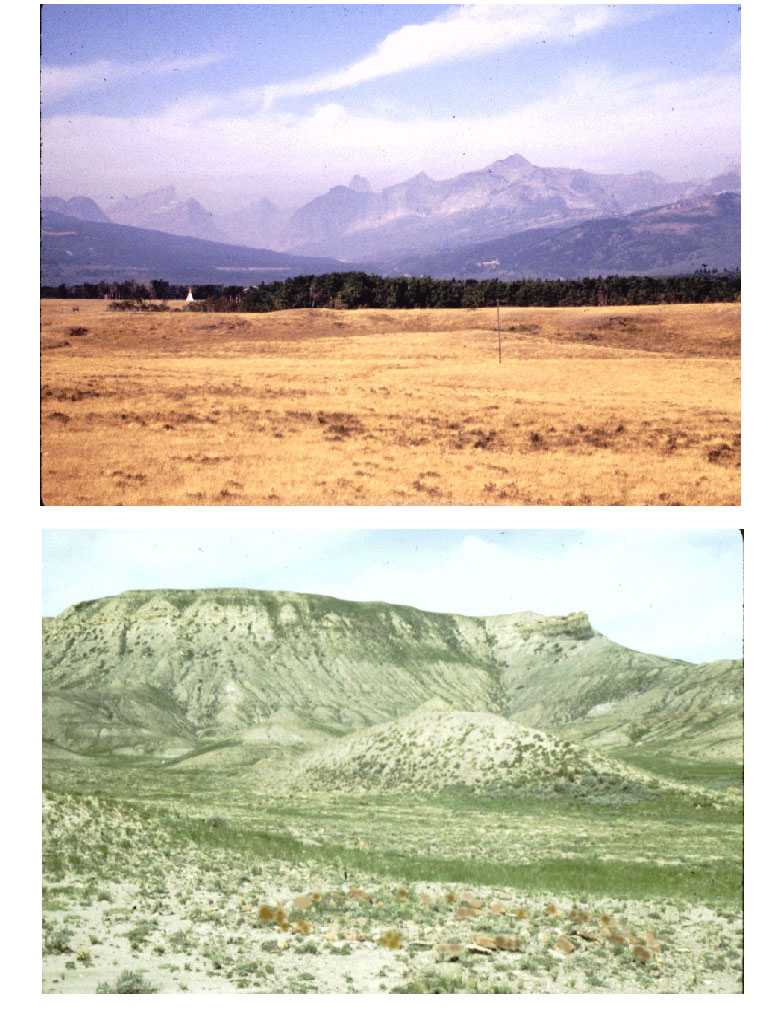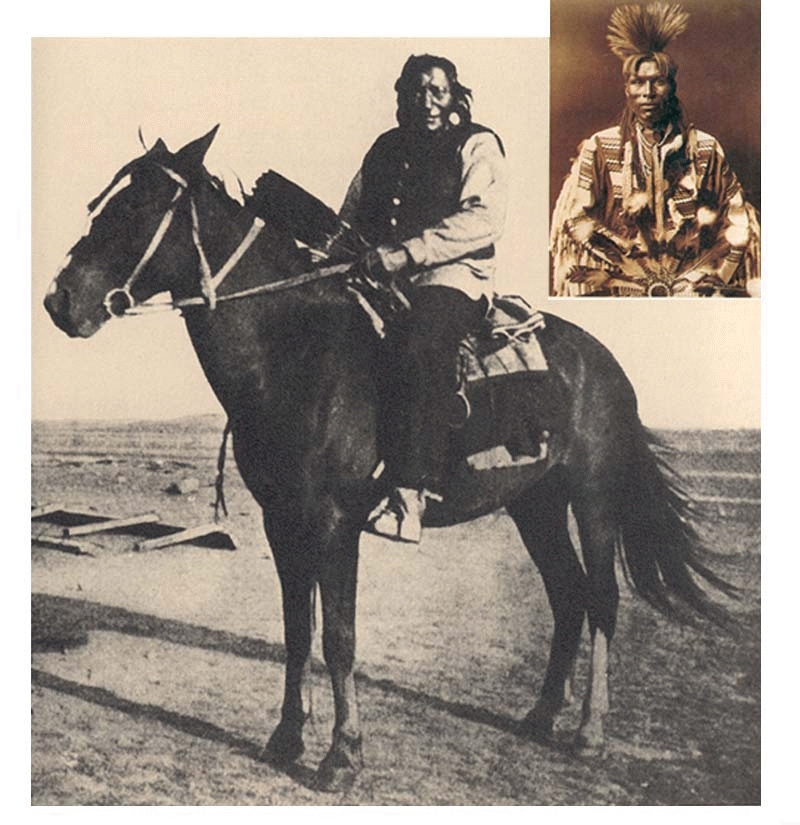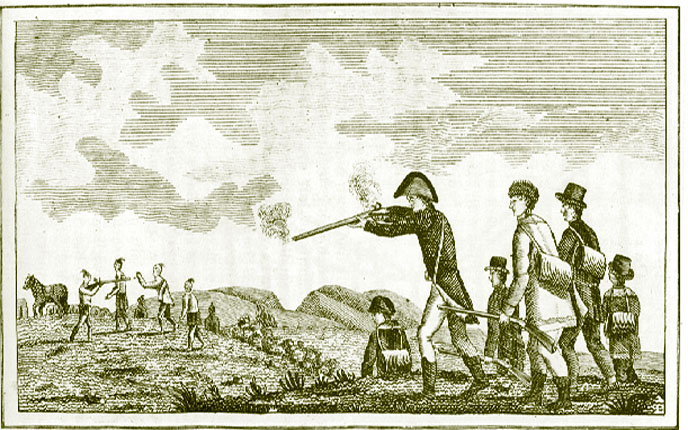

 | BLACKFEET INDIANS: For centuries the Blackfeet have inhabited the high plains of Montana and Alberta - the same area in which the dinosaur-rich, late Cretaceous Hell Creek and Oldman Formations occur. The picture to the left shows a small portion of the Blackfeet Reservation north of the town of Browning, Montana, looking westward toward the Rocky Mountains and Glacier National Park. Note the white tepee nestled between the two treelines at the left of the picture. Dinosaur fossils were known to the Blackfeet who considered them to be the remains of giant, ancestral buffalo. The Blackfeet used dinosaur bones in rituals intended to insure good hunting. At left is a Blackfeet tepee ring, and behind it, in the distance, the Sunburst Buffalo Jump, over which the Indians stampeded buffalo. The rocks of a tepee ring held down the base of the tepee against the wind. After the Indians acquired horses in the 1700's, the practice of driving buffalo over cliffs was largely discontinued as a means of harvesting these animals. As a result, the tepee ring in the picture may be several centuries old. |
 | Notwithstanding the religious sigificance dinosaur bones had for the Blackfeet, it is interesting to note that they were quite enlightened in their view toward dinosaurs. They hit on the antiquity, and the organic nature of dinosaur remains, and in comparing them to buffalo showed their sophisticated knowledge of vertebrate anatomy. Referring to dinosaurs as large buffalo was thus good scientific practice in the context of their perception of the natural world. In doing this, they were as close to the truth as was the Rev. Dr. Plot back in England, or any other European of the time. |
 | The Blackfeet dominated the northern plains as a result of their early acquisition of firearms in the fur trade with the British Hudson Bay and Northwest Fur Companies. They were aggressive and confidant fighters. The man astride the horse in the picture above is Wolf Calf, a prominent Piegan Blackfeet of the 19th century, who according to his own account, was, as a young teen-ager, involved in an attempt to steal the horses and guns of Meriwether Lewis. The incident, a contemporary print of which is shown at the left, occurred in July of 1806 as Lewis was exploring up the Marias River in an effort to see if it breached the Rocky Mountains (and at the same time as his co-explorer William Clark was unearthing a dinosaur rib several hundred miles away on the Yellowstone River). Between what are now the towns of Cut Bank and Shelby, Montana, he met a scouting party of Blackfeet, including apparently Wolf Calf. After a tense night of camping together, Lewis awoke to find the Blackfeet engaged in the theft of horses and rifles. A fight broke out in which two Indians were killed - the only bloodshed to occur during the expedition. The print is actually quite inaccurate as to details. In reality, there were 8 Indians and 4 Americans involved in the incident, and the Americans were wearing buckskin clothes not much different from those of the Indians, not the formal military coats shown in the print. In fact, Lewis had bartered his last coat to the Nez Perce shortly before to obtain the horses. |